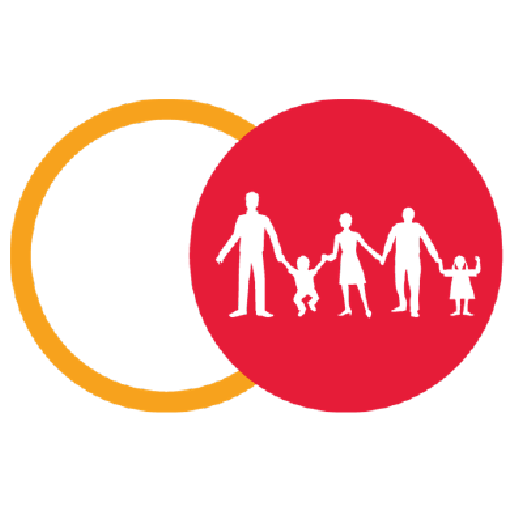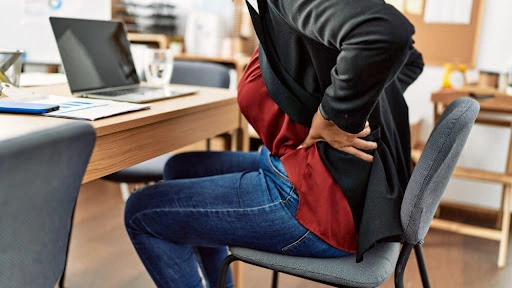
When an intervertebral disc, which acts as a cushion between the spinal vertebrae, becomes damaged or shifts out of its normal position, it’s referred to as a slipped disc. This can result in pressure on the surrounding nerves, leading to various symptoms and discomfort. Learning about the signs of a slipped disc and the available chiropractic treatment approaches empower you to make informed decisions about your spinal health.
What is a Slipped Disc?
Imagine the intervertebral discs as soft cushions that provide shock absorption and flexibility to your spine. A slipped disc occurs when the gel-like inner material of a disc pushes through the tough outer layer. This can happen due to wear and tear, injury, or sudden trauma. The result is often pressure on adjacent nerves or the spinal cord, leading to a range of slipped disc symptoms.
A slipped disc can occur in different parts of the spine, with the lumbar (lower back) and cervical (neck) regions being the most common. When the disc material presses against a nerve, it can cause pain, tingling, numbness, and even weakness in the area that the nerve serves. Depending on the location of the slipped disc, symptoms can radiate to other parts of the body, such as down the leg (sciatica) or along the arm.
Common Slipped Disc Symptoms
1. Radiating mild to sharp pain
One of the most noticeable slipped disc symptoms is mild to sharp pain that can radiate from the affected area. For instance, if the slipped disc is in the lumbar region, the pain might travel down the leg, a condition often referred to as sciatica. Similarly, a slipped disc in the cervical region can lead to pain that radiates down the arm.
2. Numbness or tingling
Numbness or tingling, also known as paresthesia, can occur due to the pressure on nerves caused by a slipped disc. These sensations are often felt in the areas served by the affected nerves. Numbness can reduce your ability to sense temperature changes or touch, affecting your overall sensory experience.
3. Muscle weakness
Muscle weakness can result from a slipped disc that presses on nerves responsible for controlling specific muscles. This weakness might make it challenging to perform everyday tasks, such as holding objects or walking. In severe cases, weakness of muscle strength can lead to difficulties with coordination and balance.
4. Changes in reflexes
A slipped disc can also impact your reflexes. Reflexes are involuntary responses that occur when a certain stimulus is applied to a specific area of the body. Pressure on nerves due to a slipped disc can cause reflexes to become exaggerated or diminished in affected areas.
5. Pain aggravated by movement
Movement can exacerbate the pain associated with a slipped disc. Activities that involve bending, twisting, or lifting might intensify the discomfort. However, some people also experience pain when sitting or lying down for extended periods.
6. Shooting pain when sneezing or coughing
Experiencing a sudden and intense shooting pain when sneezing or coughing is a common symptom associated with a slipped disc. The act of sneezing or coughing can trigger a jolt of pain that radiates along the affected nerve pathway. This sensation can be excruciating and is often indicative of the compressed nerve’s heightened sensitivity.
7. Loss of bladder or bowel control
Loss of bladder or bowel control is another symptom that can be linked to a slipped disc putting pressure on the spinal cord or nerve roots. This condition, known as cauda equina syndrome, requires assistance from a professional. It might manifest as difficulty in controlling urination or bowel movements, accompanied by numbness or weakness in the pelvic area and legs.
Causes of Slipped Discs

1. Poor Resting Posture
Maintaining an improper resting posture over time can contribute to the development of a slipped disc. Prolonged periods of sitting or lying down with poor spinal alignment can gradually strain the intervertebral discs, making them susceptible to displacement. Correcting your resting posture and using ergonomic support can help alleviate this risk factor.
2. Inappropriate Lifting and / or Carrying
Engaging in lifting or carrying objects with incorrect techniques can exert excessive pressure on the spine, leading to disc herniation.
- Poor body mechanics like bending at the waist or twisting while lifting strain the discs, making injury more likely
- Overloading the spine by lifting heavy objects or using the wrong form stresses the discs, causing compression and herniation
- Repetitive improper lifting weakens the spine’s resistance to injury over time
- Sudden jerky movements while lifting can unevenly pressure the discs, intensifying the risk
Conversely, proper techniques are vital.
- Bending at hips and knees, engaging leg muscles, and holding objects close to the body distributes weight evenly and lowers strain
- Maintaining a neutral spine position minimizes disc stress
- Avoiding torso twisting by pivoting the feet prevents spinal compromise
Similarly, repetitive motions or activities, such as common household chores or sports, that involve frequent twisting and bending at the same problem area can gradually weaken the discs, making them more susceptible to slipping as well.
3. Poor Back and Abdominal Muscle Control
Weak back and abdominal muscles fail to adequately support the spine, leaving it more susceptible to injuries like slipped discs. These muscles play a crucial role in maintaining spinal stability. When they’re weak or imbalanced, the risk of discs shifting out of place increases.
4. Sudden or Jerky Movement, Particularly During Sports
Abrupt, uncontrolled movements during physical activities, especially sports, can lead to the sudden displacement of a disc. Such movements may strain the spine beyond its limits, causing a disc to slip out of its normal position. Proper warm-up, technique, and cautious movement can mitigate this risk.
5. Lack of Regular Exercise and Reduced Fitness
A sedentary lifestyle and lack of regular exercise contribute to weakened muscles, poor posture, and reduced spine flexibility. These factors collectively elevate the chances of experiencing a slipped disc. Engaging in consistent exercise routines that promote spine health can significantly lower this risk.
6. Other Causes Including a Fall or Traffic Accident
Traumatic events like falls or traffic accidents can exert considerable force on the spine, potentially causing a disc to shift. The impact can lead to sudden herniation, affecting the structural integrity of the discs. Seeking immediate medical attention after such incidents is crucial to assess and manage any potential spinal injuries.
Chiropractic Care for Slipped Disc
Chiropractic care focuses on the musculoskeletal system, including the spine. Chiropractic adjustments offer a powerful and non-invasive solution for slipped discs. Skilled chiropractors use precise techniques to gently manipulate the spine, realigning misaligned vertebrae and reducing pressure on affected discs and nerves.
By restoring proper spinal alignment, chiropractic adjustments alleviate pain, improve mobility, and promote the body’s natural healing processes. This approach addresses the root cause of slipped discs, rather than just treating symptoms. For a slipped disc, chiropractic adjustments aim to reduce pressure on nerves and restore proper function. With chiropractic care, individuals can experience significant relief and regain their quality of life without resorting to surgery or medications.

Decompression therapy is another non-invasive and targeted approach that effectively addresses slipped discs. This treatment involves the gentle stretching and elongation of the spine, which creates a negative pressure within the affected disc. During decompression therapy, the controlled stretching is carefully calibrated to target the specific disc in question. The therapy not only promotes the repositioning of the disc but also facilitates nutrient exchange, fostering the natural healing process. By reducing the pressure on compressed nerves, patients often experience a significant reduction in pain, tingling, and numbness associated with slipped discs. As a result, the herniated or bulging disc material can retract back into its proper position, alleviating pressure on surrounding nerves.
When left untreated, a slipped disc can lead to chronic pain, reduced mobility, and decreased quality of life. By seeking treatment and making necessary lifestyle changes, individuals can take proactive steps to maintain their spinal health and overall well-being.
Concluding Words
Chiropractic therapy is said to be a preference among people who have persistent bodily aches since it is non-invasive, calming, and rapid. You may bid your physical discomforts farewell when you see our highly trained and qualified chiropractors.
Our spine and nerve specialists can treat all these issues, which include headaches, neck discomfort, muscular pain, and lower back pain. We focus on detecting the root of the problem, structural corrections, and possibly permanently reversing the problem.
Schedule An Appointment
Our highly trained chiropractic practitioners specialize in helping people from all walks of life improve their spinal health. Visit Chiropractic First for a thorough assessment from one of our experienced chiropractors. Discover a path to better health and well-being by booking an appointment with us today!



